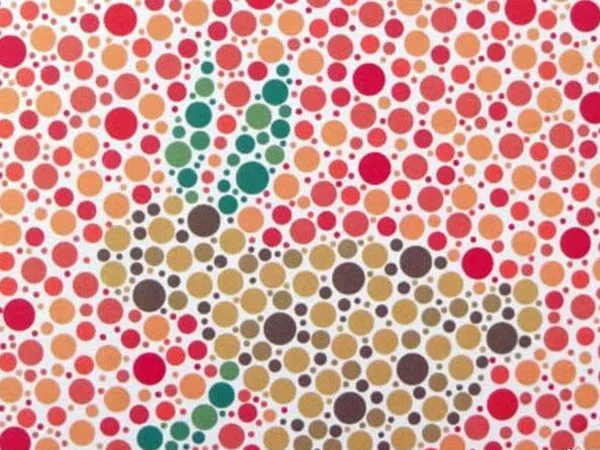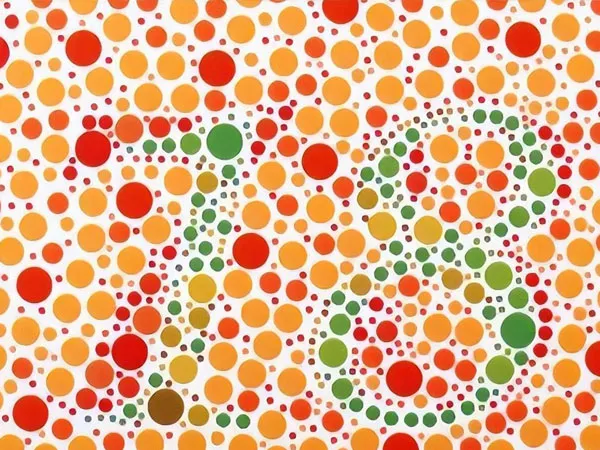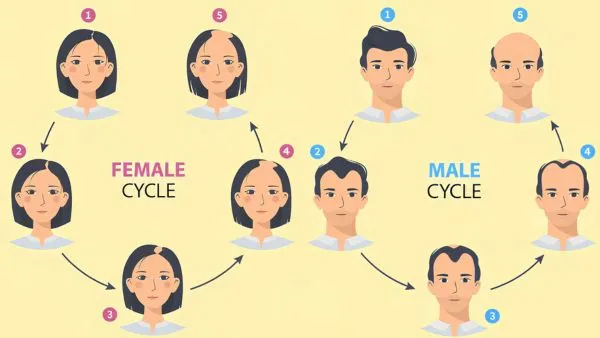
👀Can You Pass This Color Blindness Test?
This quick quiz uses visual interpretation to test how accurately you can perceive colors and shapes. Each question shows a plate designed to test for color vision deficiency. Choose the answer you see most clearly; only one is correct. Let's find out how sharp your color sense really is!
1. What animal do you see in the color dot pattern?

2. What number do you see in the pattern?

3. What animal shape is hidden in the dots?

4. Which number is shown in the color test image?

5. What number do the dots form?

6. What number do you see?

Color is everywhere, in traffic lights, warning signs, food labels, school worksheets, clothing, and even the emotions we associate with red hearts or green lights. But what if you couldn't see color the same way most people do?
Color blindness, or more accurately color vision deficiency, affects millions of people around the world. Yet many are unaware they have it until they take a test, often prompted by an unexpected moment: confusing the color of a wire, struggling with a design project, or failing a vision screening at school or work.
But what exactly is color blindness? Who is most affected? And why is it important to understand your own color perception, even if you've never noticed a problem before?
What Is Color Blindness?
Color blindness is a condition where the eyes perceive colors differently from the average person. It doesn't usually mean seeing in black and white (as is commonly misunderstood), but rather difficulty distinguishing between certain shades, most often red and green or blue and yellow.
The condition is caused by abnormalities in the cone cells of the retina, the part of the eye responsible for detecting color. These cone cells are sensitive to red, green, or blue light. If one type is missing or not functioning correctly, the brain receives incomplete color information.
There are three primary types:
- Red-Green Color Blindness (Most Common): Includes protanopia and deuteranopia, making it hard to distinguish between reds, greens, and browns.
- Blue-Yellow Color Blindness (Less Common): Includes tritanopia, causing confusion between blues and yellows or greens.
- Total Color Blindness (Rare): Known as achromatopsia, where individuals see no color at all, only shades of gray.
Who Is Affected?
Color blindness is far more common than many people realize:
- Around 1 in 12 men and 1 in 200 women worldwide are color blind.
- The condition is often inherited genetically, passed down through the X chromosome.
- Most people with color blindness are unaware until a specific situation reveals the deficiency.
In many cases, color blindness is mild and goes unnoticed in day-to-day life. But for others, particularly in fields that rely on accurate color interpretation like design, engineering, electrical work, or medicine, it can pose real challenges.
Real-Life Impacts
Color blindness isn't just about seeing things differently. It can subtly, or significantly, affect how people:
Interpret data (think color-coded charts or warning labels)
- Play games (video games, board games, or card games).
- Choose clothing (mixing patterns or colors).
- Drive (reading traffic signals when lighting or positioning is unclear)
- Perform at school or work (especially in design, science, or geography tasks)
- Because color-based assumptions are so embedded in our environment, people with color blindness may face frustration or embarrassment, especially when others don't understand the condition.
Why Take a Color Blindness Test?
Many people go through life unaware of their color vision status, especially if they've adapted without realizing it. But taking a simple color blindness test can provide clarity.
Wondering if you have color vision deficiency? Take our interactive color vision test to learn more about your color vision. It only takes a few minutes, and the results may surprise you.


